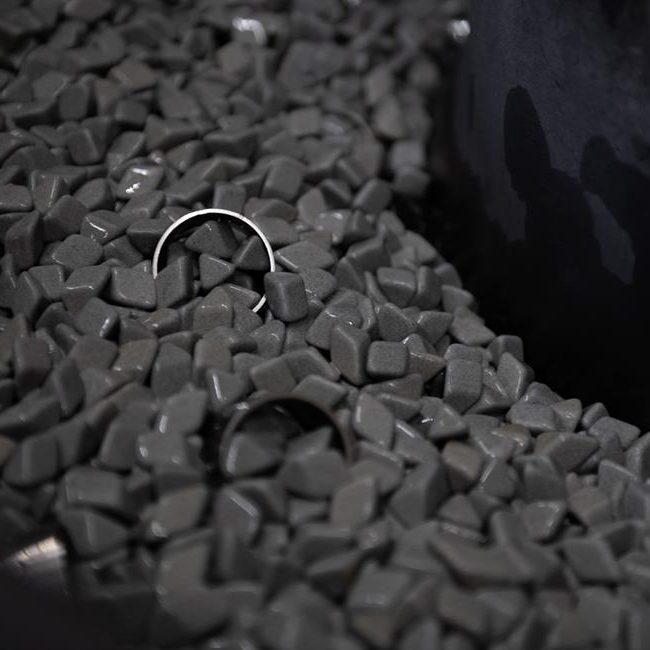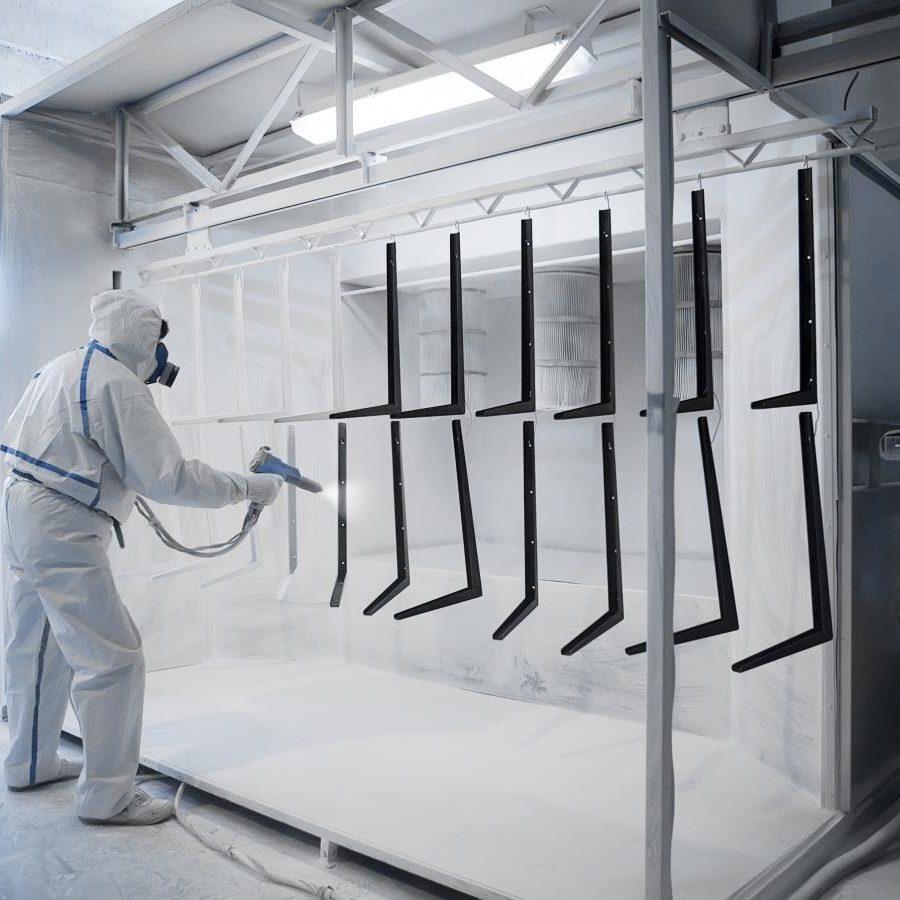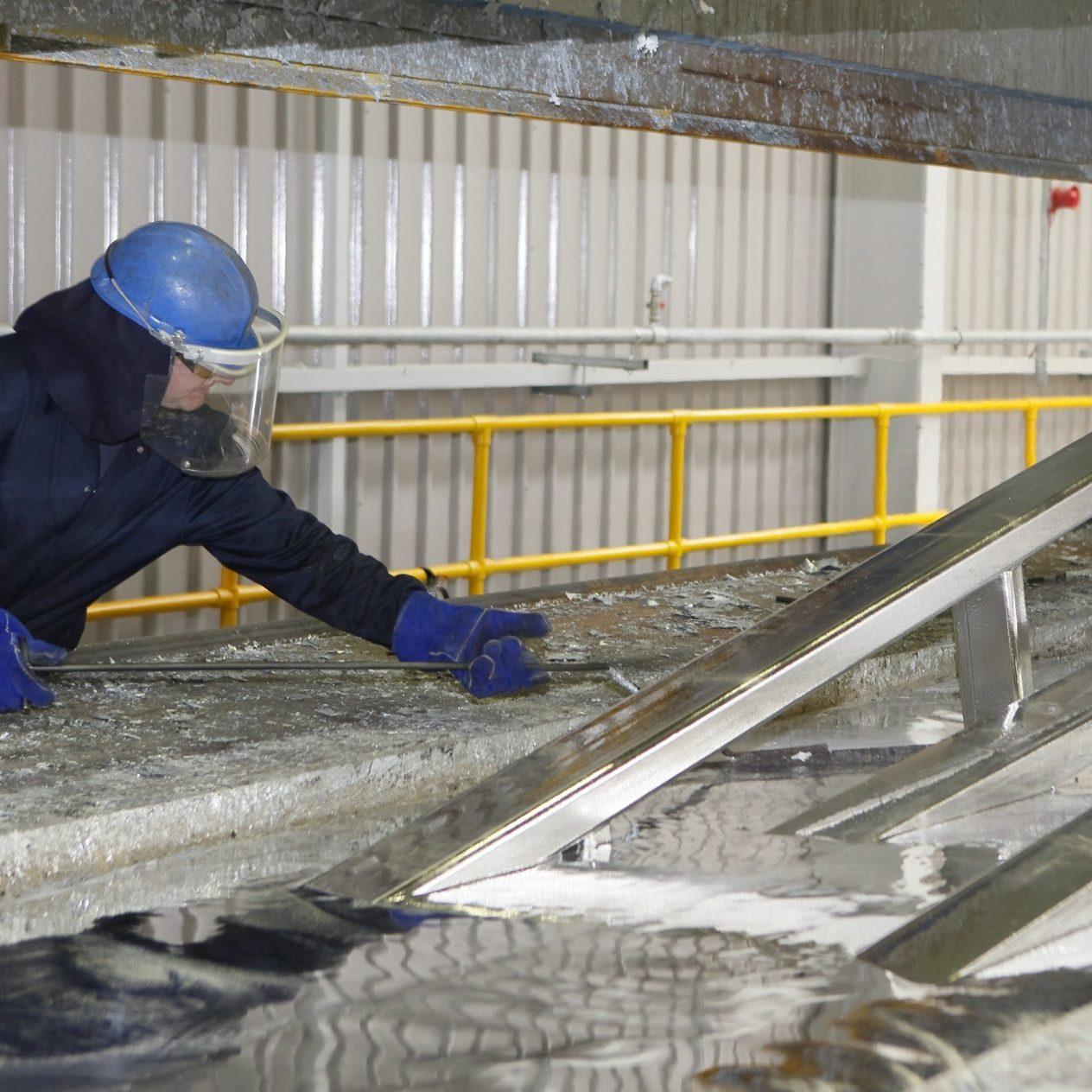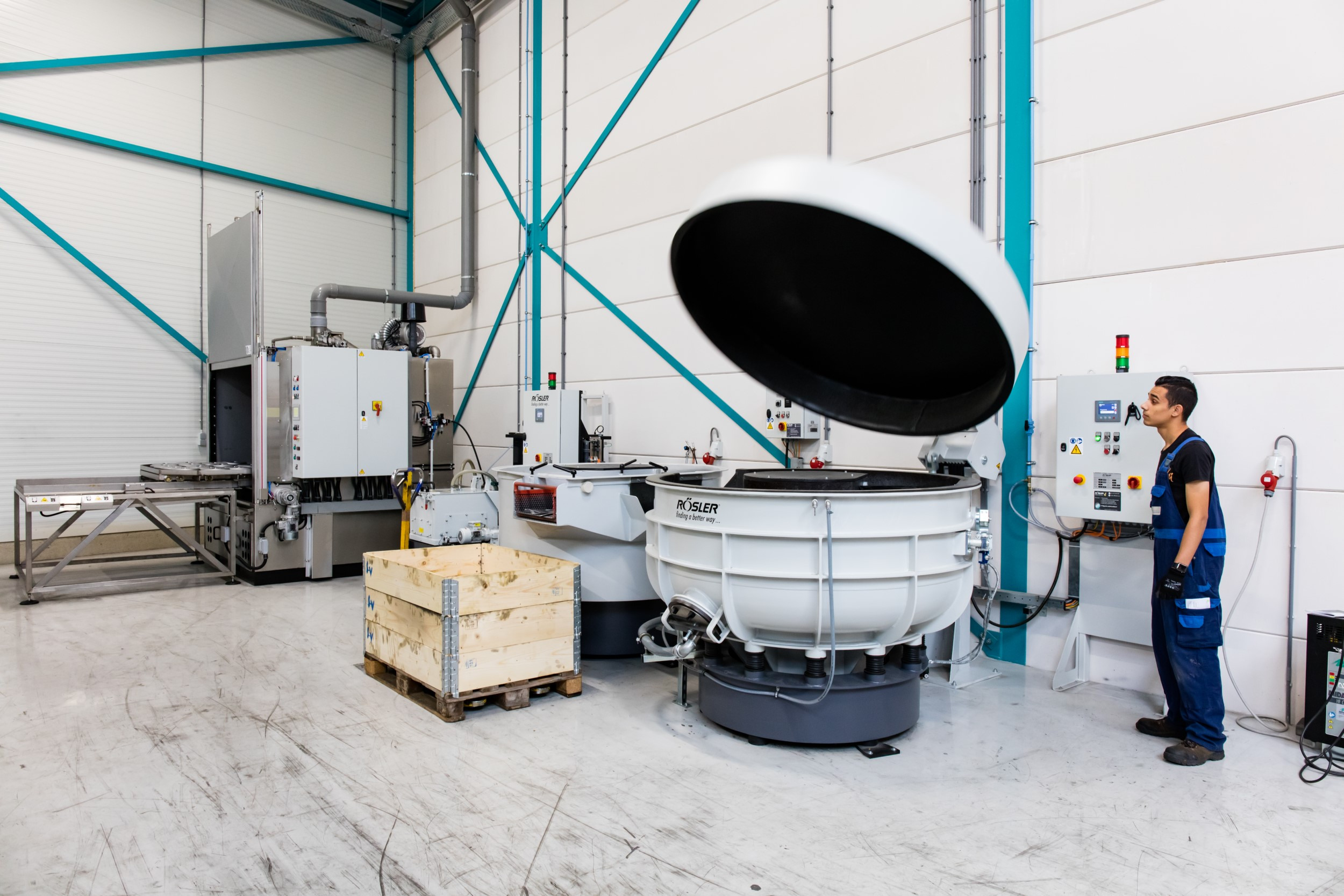How Do We Do This?
Tumbling and Washing
During certain machining processes, metal parts can develop sharp edges (burrs). We have a solution: tumbling. This process is ideal for deburring smaller parts and 3D products. Small stones are used in the tumbling process to smooth out rough spots, and any debris is then rinsed away with an anti-corrosion fluid.
For situations where metal parts need to be degreased before further processing or treatment, we have a dedicated industrial washing machine. Products are degreased in the machine and, if desired, treated with an anti-corrosion solution. This washing solution is reused multiple times and, once depleted, is safely disposed of by a certified processing company.

Important Notes on Tumbling and Washing
Tumbling or washing is often the finishing touch for a semi-finished product. While an anti-corrosion fluid may be added, it is important to understand that it reduces—but does not eliminate—the risk of rust. Moreover, its effectiveness diminishes over time.
Want to know more?Powder Coating
Powder coating is a process in which metal is covered with powder using a fully automated electrostatic powder coating line. The metal is then cured in an oven, where the powder melts, becomes viscous, and eventually forms a durable, attractive coating that protects and enhances the product.
One of the main purposes of powder coating is to protect products from external influences, especially corrosion and scratches. An effective powder coating forms a protective layer between the product and harmful elements such as water, oxygen, and weather conditions, significantly extending the product’s lifespan.
We offer a wide range of standard colors and types of powder coating, and custom colors (almost any RAL color) can be produced on request. Minimum order quantities may apply. We are happy to advise you on the available options and help you choose the best solution for your product.

Important Notes on Powder Coating
When powder coating a product, certain preparation steps are critical. For example, any openings that should be covered (so coating does not enter threaded areas) must be indicated, and the required coating thickness must be specified.
Galvanizing
Galvanizing is a surface treatment that applies a protective zinc layer to a metal product. The zinc layer protects the base material from corrosion and can be applied either electrolytically or thermally.
Electrolytic vs. Thermal Galvanizing
These are completely different processes, with distinct results, advantages, and considerations:
Coating Thickness:
Electrolytic galvanizing produces a very thin zinc layer that allows threaded areas to remain functional. Thermal galvanizing creates a thicker zinc-steel alloy layer, which usually requires post-processing of threads and fittings.
Temperature Difference:
Thermal galvanizing occurs around 450 °C, increasing the risk of deformation and limiting suitable high-strength steels.
Hollow Spaces:
Electrolytic galvanizing struggles with hollow areas due to the Faraday cage effect, which can be mitigated using auxiliary anodes. Thermal galvanizing can coat hollow spaces if they are accessible.
Further Processing:
Both methods can serve as a base layer for topcoats such as wet painting or powder coating (the “duplex system”), providing maximum protection against external influences.

Passivation
To enhance appearance and corrosion resistance, the zinc layer can be passivated, forming a chromate conversion coating. This must be specified in the product requirements, as it is not standard.
Want to know more?EPD
EPD (electrophoretic deposition) is an environmentally friendly, fully automated electrostatic coating process. Products pass through a series of baths containing water-based cathodic paint. A DC voltage draws paint particles onto the product, forming a protective and corrosion-resistant layer.
Difficult-to-Reach Areas
EPD can coat hard-to-reach areas effectively. The paint is distributed evenly, providing consistent coverage even on complex parts. Duplex System For optimal protection, EPD is often combined with powder coating or wet painting, forming a “duplex system” for maximum corrosion resistance.

Advantages of EPD
- Quality
The high-quality EPD process provides excellent corrosion protection, with the applied paint evenly distributed across your product.
- Various Layer Thicknesses
Due to the relatively thin coating thickness, even threaded parts or machined surfaces can be protected.
Ideal as a Base Layer for the protection of your product, EPD is ideal as a first primer layer prior to a powder coating or wet painting treatment.
What Challenge Do You Have for Us?
Do you have a question about our expertise or machines? We are happy to help!

